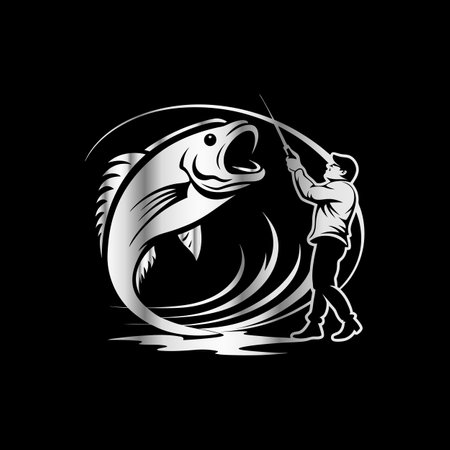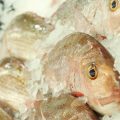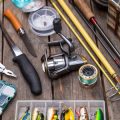1. Understanding Crappie and Panfish Behavior
If you want to catch more crappie and panfish, you’ve got to think like them. Before choosing between live bait and artificial lures, it’s crucial to understand how these fish feed, where they hang out, and what drives their habits. This know-how is the real secret sauce behind every solid day on the water.
How Crappie and Panfish Feed
Crappie, bluegill, sunfish, and other panfish are opportunistic feeders. They’ll go after anything that looks like an easy meal. Their favorites? Small minnows, worms, insects, and tiny crustaceans. But here’s the trick: Their feeding patterns shift with the seasons and even the time of day.
Feeding Habits Table
| Season | Main Diet | Best Time To Fish |
|---|---|---|
| Spring | Insects, small minnows | Morning & Late Afternoon |
| Summer | Worms, aquatic bugs | Early Morning & Dusk |
| Fall | Minnows, shad fry | Midday (warmer water) |
| Winter | Tiny invertebrates | Midday (slow bite) |
Where Panfish Like to Hang Out
Panfish don’t just roam randomly. They love structure—think brush piles, submerged trees, weed beds, docks, and drop-offs. These spots offer cover from predators and easy access to food. When water temps heat up or cool down, they’ll move deeper or shallower to stay comfy.
Panfish Hotspots Checklist:
- Brush piles & fallen logs near shorelines
- Docks with shade underneath
- Lily pads and weed beds (especially in summer)
- Sandy or gravel bottoms during spawning season
- Edges of drop-offs when temps change fast
Why Behavior Matters for Tackle Choice
The way crappie and panfish behave will make or break your tackle decision. For example:
- If they’re feeding on live minnows: Live bait rigs crush it.
- If they’re chasing bugs on the surface: Tiny jigs or soft plastics mimic insects perfectly.
- If they’re holding tight to cover: Weedless lures or slip bobber rigs can get right in their face without spooking them.
- If the bite is slow in cold water: Downsizing your lure or using a lively worm can trigger more strikes.
The bottom line: The more you know about what panfish are doing and why, the better you can match your approach—whether that means threading on a juicy nightcrawler or tying on a flashy plastic minnow.
2. The Case for Live Bait
Why Live Bait Works So Well for Crappie and Panfish
If you want to stack up slabs or fill your bucket with bluegill, there’s no beating the old-school power of live bait. Crappie and panfish are opportunistic feeders, and nothing gets their attention like the real thing. Minnows, worms, crickets—they all look, smell, and move just like what these fish eat every day. When you need to put fish in the boat, live bait is often the most reliable choice.
Top Types of Live Bait
| Live Bait Type | Best For | How To Use |
|---|---|---|
| Minnows | Crappie (especially big slabs) | Lip-hook on a small Aberdeen hook under a slip bobber near brush piles or docks |
| Nightcrawlers & Red Worms | Bluegill, sunfish, perch | Thread onto a #8 or #10 hook; fish on the bottom or under a float near weed edges |
| Crickets & Grasshoppers | Panfish of all kinds in summer | Hook through the collar; cast near overhanging trees and grassy banks |
| Waxworms & Mealworms | Panfish during cold fronts or ice fishing | Tip small jigs or use solo on tiny hooks for finicky biters |
When Live Bait Outshines Lures
- Tough Bite Conditions: When fish get finicky—think cold fronts, muddy water, heavy pressure—live bait’s scent and natural movement can coax them into biting when lures get ignored.
- Kicking Off Spring: Early season crappie and panfish often need that extra incentive. Minnows and worms are unbeatable when water temps are still low.
- You’re Taking Kids Fishing: Nothing keeps young anglers entertained like watching a bobber dance. Live bait almost always means more action and faster bites.
- Targeting Trophy Fish: Bigger crappie often prefer a lively minnow over any plastic. If you’re hunting giants, live bait stacks the odds in your favor.
The Real-World Edge: Scent & Movement
Lures look good, but they don’t smell like dinner. Live bait gives off natural scent trails that draw in fish from farther away. Plus, no lure can match the way a real minnow darts around or a worm wiggles on the hook. These subtle movements trigger instinctive strikes from even stubborn crappie and panfish.
Bait Shop vs. Catch Your Own: A Quick Comparison
| Bait Source | Pros | Cons |
|---|---|---|
| Bait Shop (Store-Bought) | Convenient, consistent size/quality, saves time | Costs add up, may not be as lively as wild-caught |
| Caught Yourself (Seining/Trapping) | Free, local species match forage perfectly, often livelier bait | Takes time/effort, sometimes not allowed by local regs |
No matter how you get your bait, one thing is clear: when you want to outfish everyone else at the dock—or just make sure you’re not going home empty-handed—live bait puts more crappie and panfish on your line.

3. The Power of Artificial Lures
When it comes to catching crappie and panfish, artificial lures have seriously upped their game over the years. Sure, live bait like minnows and worms are classic choices, but plastics, jigs, and spinners offer some real advantages—especially if you want to cover water fast or get picky fish to bite.
The Pros of Using Plastics, Jigs, and Spinners
| Lure Type | Main Advantages |
|---|---|
| Soft Plastics | Endless shapes/colors; durable; great for finesse; easy to swap out |
| Jigs | Super versatile; cast, troll, or vertical jig; works year-round |
| Spinners | Adds flash/vibration; covers water quickly; triggers reaction bites |
Why Modern Lures Catch More Fish
Today’s artificial baits are nothing like your granddad’s old-school stuff. Modern plastics mimic everything from tiny shad to baby crawfish. Some even come scented or with added attractants baked in—which means you get more hits, even when crappie are shy.
Cover More Water, Find More Fish
With artificials, you’re not stuck waiting for fish to stumble across your bait. You can cast and retrieve spinners or work a jig along drop-offs and brush piles. This lets you dial in where the slabs are hiding and put your lure right in their strike zone.
Quick Tip: Match the Hatch
If you know what the local baitfish look like (minnows, shad), pick plastics and jigs that match those colors and sizes. For clear water, go natural. For stained water, try chartreuse or bright hues that stand out.
4. Real-World Situations: When to Choose Each
Knowing when to grab live bait or tie on an artificial lure can be the difference between a killer day and getting skunked. Let’s break down what works best for crappie and panfish in common scenarios you’ll run into across the U.S.
Pressured Lakes
If you’re hitting a lake that gets hammered by other anglers, fish get wise to typical presentations fast. In these situations, live bait—like minnows or worms—often outperforms. The natural movement and scent can tempt even the most cautious slab when they’ve seen every jig in the book. But, if local regulations restrict live bait or you want to cover water faster, go with small soft plastics or downsized marabou jigs; just keep your presentation subtle and slow.
Muddy Water
When the water looks like chocolate milk after a rain, fish rely more on their sense of smell and vibration than sight. Live bait is usually king here. A lively minnow or nightcrawler sends out plenty of scent trails that help fish zero in. If you’re set on artificials, choose brightly colored lures with lots of thump—think chartreuse tubes or spinner grubs with a Colorado blade.
Cold Fronts
After a cold front blows through, panfish get finicky and sluggish. Slow down everything. Live bait fished under a float and barely moved can convince tight-lipped crappie to take a bite when they ignore plastics completely. If you stick with artificials, go micro—tiny hair jigs or ice jigs tipped with waxworms work best, but don’t expect fast action.
Spawning Beds
During the spawn, both live bait and artificials have their place. Fish are aggressive and protective, so bright artificial lures that mimic intruders (like curly tail grubs or beetle spins) can trigger reaction strikes. However, if the bite slows down or you’re after bigger females, slip a minnow or piece of worm right onto their bed for a sure thing.
Panfish Tactics Cheat Sheet
| Situation | Best Choice | Why It Works |
|---|---|---|
| Pressured Lakes | Live Bait (minnows/worms) | Natural scent & movement fool wary fish |
| Muddy Water | Live Bait / Bright Artificial Lures | Scent and vibration attract fish in low visibility |
| Cold Fronts | Live Bait under float / Micro Jigs | Slow presentation matches sluggish fish mood |
| Spawning Beds | Artificial Lures / Live Bait on beds | Aggression strikes from protectiveness; live bait for picky big ones |
The Bottom Line for Rigging Up Smart
The best anglers know there’s no one-size-fits-all answer—adapt based on what the lake throws at you. Whether you’re dunking minnows in muddy water or hopping plastics over bedding fish, matching your rig to real-world conditions ups your odds of filling the cooler every time out.
5. Essential Gear and Setups for Each Approach
When it comes to catching crappie and panfish, your gear matters. Whether you’re a live bait purist or a lure junkie, dialing in your setup can mean the difference between a limit in the cooler or a slow day on the water. Let’s break down what you need—rods, reels, line, and terminal tackle—whether you’re fishing from a boat or off the bank.
Rods and Reels: Matching Your Tactics
| Approach | Rod Type & Length | Reel Style | Best For |
|---|---|---|---|
| Live Bait | Ultralight spinning rod (6-8 ft) | Small spinning reel (size 1000-2000) | Slip bobbers, tightlining minnows, float rigs |
| Artificial Lures | Ultralight to light action rod (5-7 ft) | Spinning or underspin reel | Casting jigs, spinners, soft plastics |
Line Selection: Finesse Wins the Day
Panfish have sharp eyes and light bites. For both live bait and lures, most anglers swear by 2-6 lb test monofilament or fluorocarbon line. If you’re working heavy cover or brush piles, bump up to 8 lb test braid with a mono leader for extra toughness.
Terminal Tackle Breakdown
| Bait/Lure Style | Hooks/Jigs | Extras You Need |
|---|---|---|
| Live Bait (Minnows/Worms) | #6-#8 Aberdeen hooks, split shot sinker, slip bobber | Bait bucket, bobber stops, small swivels (to avoid line twist) |
| Lures (Jigs/Spinners/Soft Plastics) | 1/32–1/16 oz jig heads, small spinnerbaits, tube jigs or grubs | Tackle box with assorted plastics, scents attractant (if legal) |
Tested Setups for Boat and Bank Anglers
Boat Setup Tips:
- Shoot docks with short rods: A 5-6 ft ultralight rod works for skipping small jigs under docks or low-hanging limbs.
- Tightline over brush: Use long 7-10 ft rods for vertical presentations when hovering over submerged structure.
Bank Fishing Tips:
- Sensitive bobber rigs: Pair an ultralight rod with a slip bobber to cast out live bait and keep it in the strike zone longer.
- Casting lures parallel to shore: Use smaller jigs or beetle spins retrieved slowly along weedlines for cruising panfish.
No matter your approach—live bait or lures—the right setup gets more bites. Dial it in, keep it simple, and let the fish tell you what they want.
6. Tips from Seasoned Anglers
When it comes to catching crappie and panfish, nothing beats street-smart advice from anglers who’ve logged serious time on the water. Here’s a collection of hard-earned tips and local hacks from American crappie and panfish veterans—straight from their boats to your tackle box.
Live Bait Secrets from the Old-Timers
- Minnow Magic: Use small shiners or fathead minnows hooked through the lips for natural swimming action. Drop them near brush piles or docks at dawn or dusk for best results.
- Worm Wiggle: Thread a nightcrawler on a size 8 Aberdeen hook, just enough to let it dangle off the end. This trick is deadly when fish are finicky in early spring.
- Bait Storage: Keep bait cool in an insulated bucket with a portable bubbler—nobody likes limp, lifeless bait in summer heat.
Artificial Lure Hacks: How the Locals Do It
- Jig Head Color Code: Veteran anglers swear by chartreuse or pink jig heads paired with white soft plastics in stained water, but go natural (silver/black) when the water’s clear.
- Downsize to Upsize: When crappie get lockjaw, switch to micro jigs (1/32 oz) tipped with a tiny plastic grub—it’s often the ticket for getting bites when nothing else works.
- Twitch & Pause: Cast out, let your lure sink, then work it back with sharp twitches followed by short pauses. This mimics a wounded baitfish and triggers big strikes.
Quick Comparison Table: Live Bait vs. Artificial Lures Tips
| Live Bait | Artificial Lures | |
|---|---|---|
| Best Time to Use | Dawn, dusk, after cold fronts | Anytime, especially midday or post-spawn |
| Water Clarity | Muddy or stained water shines with live bait | Clear water favors subtle, realistic plastics |
| Main Advantage | Natural scent & movement attract more bites | Covers more water quickly; reusable & versatile |
| Local Favorite Setup | Minnow under slip bobber near structure | 1/16 oz jig with curly tail grub cast to shaded banks |
Panfish Pro Tip: Match Your Gear to Your Tactics
If you’re running live bait, use an ultralight rod with sensitive tip—you’ll feel those subtle takes better. For artificial lures, spool up with 4-6 lb mono or braid for longer casts and solid hooksets.
No-Nonsense Advice from the Bank or Boat:
- If fish stop biting, don’t be afraid to move—sometimes 10 feet makes all the difference.
- Crumple up some old newspaper and rub your hands before handling bait—old timers say it masks unnatural smells that spook fish!
- Panfish love shade: target overhanging trees, dock pilings, and submerged brush—whether you’re dunking worms or casting jigs.
The next time you hit your favorite lake or river, try these battle-tested tricks and watch your catch rate climb—because there’s no substitute for lessons learned on real American waters.
7. Making the Best Choice for Your Next Trip
When it comes to catching crappie and panfish, choosing between live bait and artificial lures can make or break your day on the water. Let’s break down what you need to know so you can walk away with a stringer full of slabs and some great memories.
What’s Your Goal?
If you’re out to fill a cooler or just want non-stop action, live bait like minnows, worms, or crickets is tough to beat. These natural snacks have a scent, feel, and movement that panfish just can’t resist. But if you love trying new techniques, covering more water, and don’t want to mess with keeping bait alive, artificial lures might be your jam.
Quick Comparison: Live Bait vs. Artificial Lures
| Live Bait | Artificial Lures | |
|---|---|---|
| Ease of Use | Beginner-friendly, just hook and go | Takes practice to work the action right |
| Bite Rate | Usually higher—real food! | Can be hit-or-miss depending on conditions |
| Mess Factor | Get ready for slime and dirt | No mess—just grab and cast |
| Cost & Storage | Need to buy fresh each trip; keep cool and alive | Reusable; store in a tackle box forever |
| Casting Distance | Shorter casts (bait is heavier/slippery) | Lighter or weighted for long casts and precision |
| Fun Factor | Satisfying when fish slam live bait | A rush when you fool ’em with plastic or jigs! |
Pro Tips for Making Your Pick:
- If the bite is slow or water is cold, live bait often triggers more strikes.
- On pressured lakes where fish see a lot of bait, try small plastics or jigs to stand out.
- If you’ve got kids along, live bait will keep them busy catching fish after fish.
- Want to cover tons of shoreline? Tie on a lure and keep moving—you’ll find active fish faster.
- Mornings and evenings: Both bait types work well, but experiment until you dial in what they want that day.
Your Next Step: Hit the Lake Prepared!
No matter which side you pick—live bait or artificial—you’re set for an awesome day targeting crappie and panfish. Mix things up, pay attention to the conditions, and don’t be afraid to swap tactics mid-trip. Most importantly? Have fun out there, swap stories at the dock, and remember: Sometimes the best lure is just being on the water.


